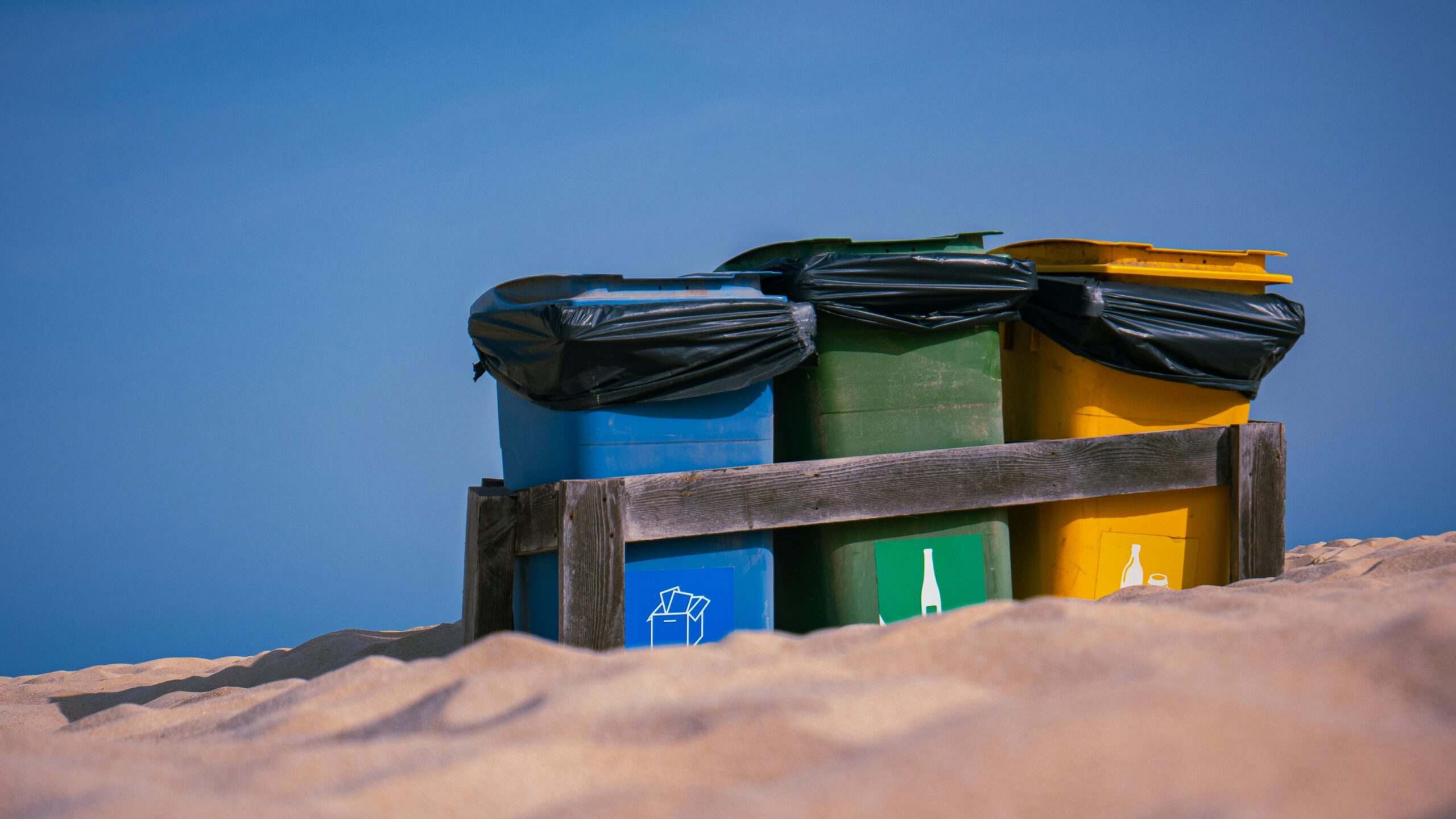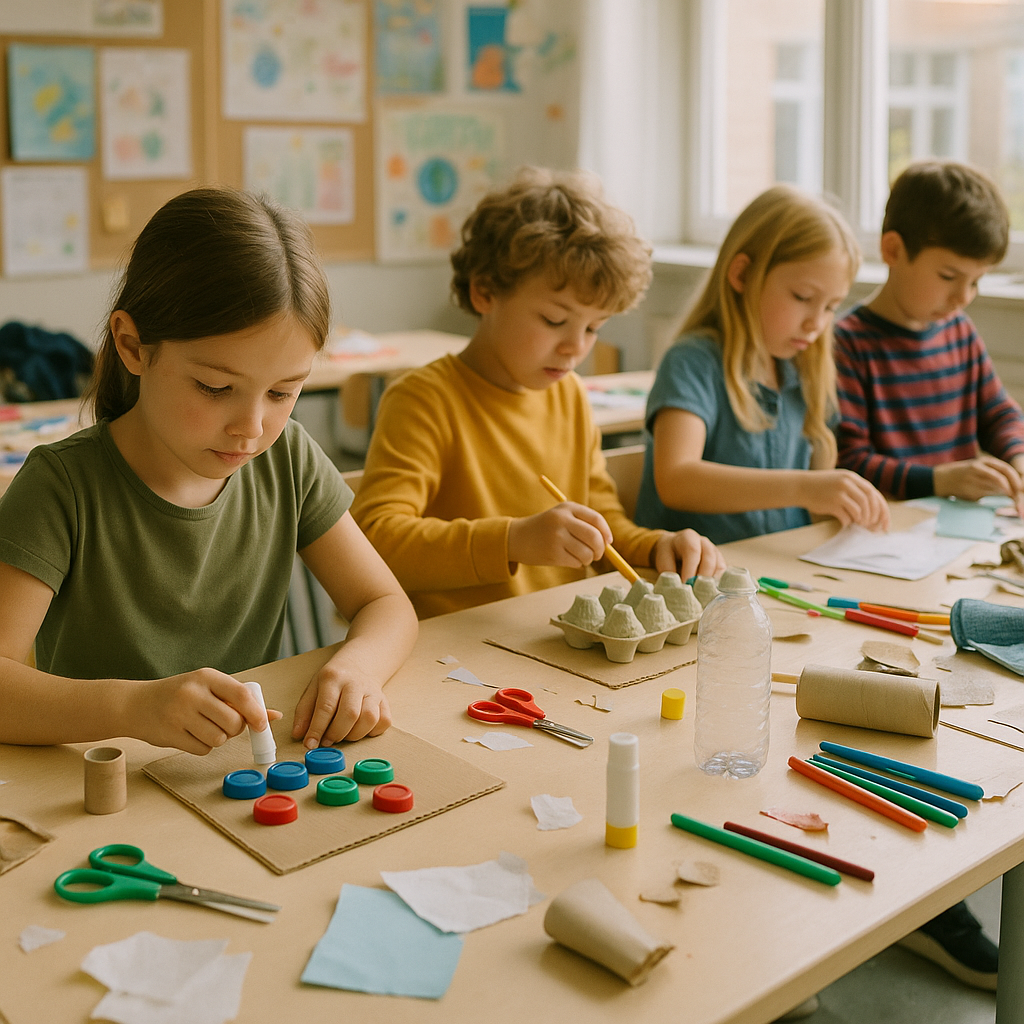5901 Botham Jean Blvd, Dallas, TX 75215
How Can Storytelling Effectively Teach Recycling?
May 15, 2025Stories have a unique power to transform how children perceive the world. In environmental education, they achieve what facts and figures alone cannot. Children connect with characters, follow adventures, and internalize values through narratives, making complex topics like recycling accessible and meaningful.
Storytelling bridges the gap between environmental knowledge and action. When children hear tales of animals affected by pollution or peers making a difference through recycling, they develop both an emotional connection and practical understanding. This approach is more effective than simply instructing them to sort their trash.
The key to successful recycling education is matching stories to developmental stages. Preschoolers respond to simple visual narratives featuring colorful characters taking basic recycling actions. Primary school children engage with adventure-based stories where characters solve environmental problems. Older students connect with more complex narratives addressing real-world recycling challenges.
How Can Recycling Storybooks Inspire Environmental Responsibility?

Recycling storybooks offer a compelling way to instill environmental values in children through engaging narratives and relatable characters. These books simplify complex sustainability concepts into accessible adventures that resonate with young minds.
Books like “The Most Magnificent Thing” by Ashley Spires teach children about resourcefulness and perseverance. This popular title shows a young girl using items found around her home to create something extraordinary. Beyond its environmental message, it teaches children about emotional control and persistence when facing challenges. As one reader noted, “It beautifully conveys the message that the path to creating something extraordinary is often filled with twists and turns.”
Julian Lennon’s “Heal the Earth: Volume 2” takes children on an immersive journey with lyrical text and vibrant illustrations. Readers join characters bringing medicine to people in need, creating homes for animals, and developing green spaces. This approach helps children visualize how their actions can positively impact the world. A grandparent who purchased the book remarked it was “a good introduction for my grandkids about the environment and the planet.”
For younger readers, “Don’t Throw That Away!” by Lara Bergen offers an interactive experience with large flaps children can open as they progress through the story. The book demonstrates how to transform old clothes into costumes or build a car from a cardboard box, teaching the valuable concept of turning trash into treasure. One reviewer highlighted that their “favorite part is that the book is made of 100% recycled materials,” reinforcing the book’s environmental message.
Creating Environmental Champions Through Characters
Storybooks featuring characters who actively recycle demonstrate positive attitudes and actions that children can imitate. These characters typically display thoughtfulness, creativity, and persistence. Through these role models, children learn how their choices affect the environment and develop habits that can last a lifetime.
“One Plastic Bag” by Miranda Paul shares the true story of Isatou Ceesay, who helped solve plastic waste problems in her Gambian village. By following Ceesay’s journey, children see how one person’s determination can transform a community. This real-world connection helps children understand that their actions can make a tangible difference.
For older children, “Why Should I: Recycle?” by Jen Green follows a character named Amy who discovers recycling after seeing her teacher putting newspapers and bottles outside. The narrative guides readers through recycling plants and explains why certain materials can be recycled, making the concept concrete and accessible.
Beyond the Page: Making Stories Actionable
The impact of these books extends beyond reading time. Characters who solve environmental problems foster problem-solving skills and critical thinking in young readers. When children see book characters taking initiative, they develop a sense of agency and believe in their ability to create positive change.
Parents and educators can amplify these lessons by connecting storybook concepts to real-world activities. Creating upcycled crafts inspired by stories reinforces resourcefulness. Organizing a neighborhood cleanup brings pollution-themed books to life. Planting seedlings or building mini-compost bins helps children understand sustainability concepts through hands-on experience.
“I’m Trying to Love Garbage” by Bethany Barton balances education with entertainment by sharing the history of waste management with humor and engaging illustrations. One fan described it as “one of her best yet!” This approach makes environmental education enjoyable rather than overwhelming.
Recycling storybooks serve as powerful tools to plant seeds of environmental responsibility in children. Through relatable characters, engaging plots, and actionable messages, these books inspire the next generation to become thoughtful stewards of our planet.
What Fun Activities Can Complement Recycling Storytelling?

Storytelling is a great way to teach children about recycling. When combined with hands-on activities, these lessons become more engaging and memorable. Here are practical activities that reinforce recycling concepts through active participation.
Recycling Games and Competitions
Turn recycling into an exciting challenge with sorting games. Children can race to place items in the correct bins, earning points for accuracy and speed. This gamification reinforces proper waste segregation while making the process fun.
Scavenger hunts offer another dynamic approach. Provide children with a list of recyclable items to find around the home or classroom. This activity helps them recognize recyclables in their daily environment and understand what materials can have second lives.
Board games using recycled materials combine creativity with environmental education. Children can design their own recycling-themed games using cardboard, bottle caps, and other reused items, turning the process into a lesson in repurposing.
Hands-On Craft Projects
Bottle cap mosaics turn colorful plastic caps into vibrant art. Children glue these caps onto cardboard to create patterns or pictures, showing how small items often discarded can become beautiful artistic materials.
Puppet-making from recycled materials extends storytelling in a tangible way. Children can create characters from paper bags, old socks, or cardboard tubes, and these puppets can star in their own recycling stories, reinforcing the narrative lessons through creative play.
Recycled musical instruments introduce both environmental and artistic concepts. Containers become drums, bottle caps transform into tambourines, and rubber bands stretched over boxes make string instruments. Children learn about reusing materials while exploring sound and rhythm.
Group-Based Learning Activities
Peer teaching activates social learning mechanisms. After mastering recycling concepts through stories, children can teach their friends or younger students, reinforcing their knowledge while developing communication skills.
Collaborative recycling projects build teamwork. Groups can work together to create a recycled art installation or community garden using plastic bottles as planters, demonstrating the power of collective environmental action.
Story extension activities deepen engagement with recycling narratives. Have students write and illustrate their own stories about items being recycled into something new. They can bind these stories using scrap paper and share them with classmates.
Visual and Interactive Learning
Recycling stations with clear visual guides help children practice sorting in real time. Labels with pictures show where different materials belong, allowing for hands-on application of recycling knowledge.
Waste audits offer a revealing learning experience. With adult supervision, children can analyze classroom or home waste to identify recycling opportunities. Recording and graphing the findings turns this into a meaningful data exercise.
Word-based storytelling games use recycling vocabulary in creative ways. Following the method described by Playtivities, children can pick random recycling-related words from a container and incorporate them into collaborative stories, reinforcing terminology while encouraging imagination.
Child-Led Initiatives
Recycling pledges empower children as environmental advocates. After learning about recycling through stories, they can create and sign personal commitments about how they’ll reduce waste. These pledges can be displayed on a classroom wall as visual reminders.
Home recycling centers designed by children transform their learning into action. Children can create and decorate collection stations for their homes, explaining the system to family members, extending the educational impact beyond the classroom.
Recycling monitors give children leadership roles in maintaining classroom sustainability practices. Rotating this responsibility ensures all students have the opportunity to take ownership of environmental stewardship.
Conclusion: Empowering Children Through Recycling Storytelling
Storytelling acts as a powerful bridge between children and recycling education. By crafting age-appropriate narratives that present environmental concepts in engaging ways, we create lasting connections that shape children’s understanding and behavior. Stories transform abstract recycling concepts into memorable experiences that resonate with young minds and inspire action. Through character-driven tales featuring recycling heroes, interactive narratives, and problem-solving adventures, children develop deeper connections to sustainability principles.
Combining storytelling with hands-on activities like recycling games, upcycling challenges, and nature exploration creates comprehensive learning experiences that reinforce environmental stewardship. These approaches not only teach children about recycling but also empower them to become environmental advocates in their homes, schools, and communities. The seeds of environmental awareness planted through these storytelling methods will grow into the next generation of sustainability leaders who carry forward the legacy of environmental protection for years to come.
For comprehensive recycling solutions that support your environmental education initiatives, contact Okon Recycling at 214-717-4083.
